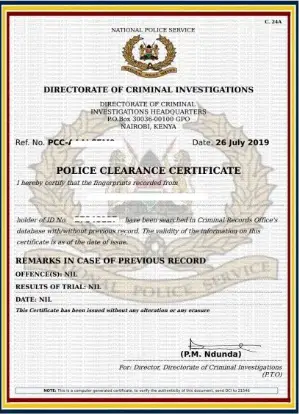In Kenya, obtaining a driving license is a crucial step towards gaining the privilege to operate various types of vehicles legally and safely.
One such category is the Class D license, which allows individuals to operate vans designed to carry a maximum of 14 passengers.
This article will provide a detailed overview of the Class D driving license in Kenya, covering aspects such as the license category, vehicle descriptions, additional categories, and the requirements for obtaining this license.
License Category
The Class D driving license in Kenya falls under the category of licenses that grant permission to operate specific types of vehicles. In this case, it is tailored for individuals who intend to drive vans with a capacity to transport up to 14 passengers.
This license is essential for those looking to engage in passenger transportation services, such as minivan shuttles or small bus services.
Description of Vehicles to Operate with Class D License
With a Class D driving license, individuals are authorized to operate vans designed for passenger transportation.
These vans typically have a seating capacity of up to 14 passengers, making them suitable for various purposes, including public transportation, private hire, and group tours.
It is important to note that the Class D license does not allow the holder to operate larger commercial vehicles, such as buses or trucks, which require specific licenses under different categories.
Additional Categories to Operate with Class D License
In addition to the primary authorization to drive vans, individuals holding a Class D license in Kenya are also permitted to operate vehicles falling under the B1 and B2 categories.
These additional categories expand the scope of vehicles that can be legally driven with a Class D license. Specifically:
- B1 Category: This category encompasses light vehicles, including saloon cars, station wagons, and vans with a carrying capacity of up to 7 passengers, excluding the driver.
- B2 Category: The B2 category includes motorbikes with engine capacities not exceeding 125cc. It is primarily designed for smaller motorcycles and scooters.
These additional categories provide flexibility for Class D license holders, allowing them to drive a wider range of vehicles based on their needs and preferences.
Requirements for Obtaining a Class D License in Kenya
To obtain a Class D driving license in Kenya, individuals must meet specific requirements set by the National Transport and Safety Authority (NTSA). These requirements include:
- Age: Applicants must be at least 22 years old to be eligible for a Class D license.
- Experience: Prospective Class D license holders must have a minimum of four years of driving experience. This experience can be accrued while holding a lower-category license and adhering to traffic laws and regulations.
- Medical Examination: Applicants are required to undergo a medical examination to ensure they are physically fit to drive safely. This examination includes tests for vision, hearing, and general health.
- Theory Test: Applicants must pass a theory test that evaluates their knowledge of road signs, traffic rules, and safe driving practices. This test ensures that individuals understand the rules of the road and can apply them while driving.
- Practical Driving Test: After passing the theory test, applicants must successfully complete a practical driving test. During this test, individuals are assessed on their ability to operate a Class D vehicle safely, obey traffic laws, and demonstrate defensive driving skills.
- Application Process: Applicants should submit the required documents, including a duly filled application form, copies of their identification documents, and proof of payment of the prescribed fees.
Once all these requirements are met and the tests are successfully passed, the applicant will be issued a Class D driving license, enabling them to legally operate vans and vehicles in the B1 and B2 categories.
Conclusion
In Kenya, the Class D driving license is essential for individuals who wish to operate vans with a maximum passenger capacity of 14. It also provides the additional advantage of allowing holders to drive vehicles falling under the B1 and B2 categories, expanding their range of options.
To obtain a Class D license, applicants must meet age and experience requirements, pass medical and theory tests, and successfully complete a practical driving test.
Adhering to these requirements ensures that individuals are well-prepared and responsible drivers, contributing to road safety in Kenya. Obtaining a Class D license is not only a legal requirement but also a step toward becoming a skilled and responsible driver on Kenyan roads.



